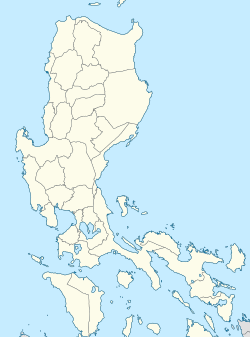This article needs additional citations for verification .(April 2022) |
 San Pablo station in 1923 | ||||||||||||||||||||
| General information | ||||||||||||||||||||
| Location | Pedro Alcantara, Barangay II | |||||||||||||||||||
| Coordinates | 14°4′7.32″N121°19′16.32″E / 14.0687000°N 121.3212000°E | |||||||||||||||||||
| Owned by | Philippine National Railways | |||||||||||||||||||
| Operated by | Philippine National Railways | |||||||||||||||||||
| Line(s) | South Main Line Former: Malvar | |||||||||||||||||||
| Platforms | Side platform | |||||||||||||||||||
| Tracks | 1, plus 1 siding track | |||||||||||||||||||
| Construction | ||||||||||||||||||||
| Structure type | At grade | |||||||||||||||||||
| Accessible | Yes | |||||||||||||||||||
| Other information | ||||||||||||||||||||
| Station code | PBO | |||||||||||||||||||
| History | ||||||||||||||||||||
| Opened | July 3, 1911 | |||||||||||||||||||
| Services | ||||||||||||||||||||
| ||||||||||||||||||||
| ||||||||||||||||||||
San Pablo station is a railway station located on the South Main Line in San Pablo, Laguna, Philippines.


